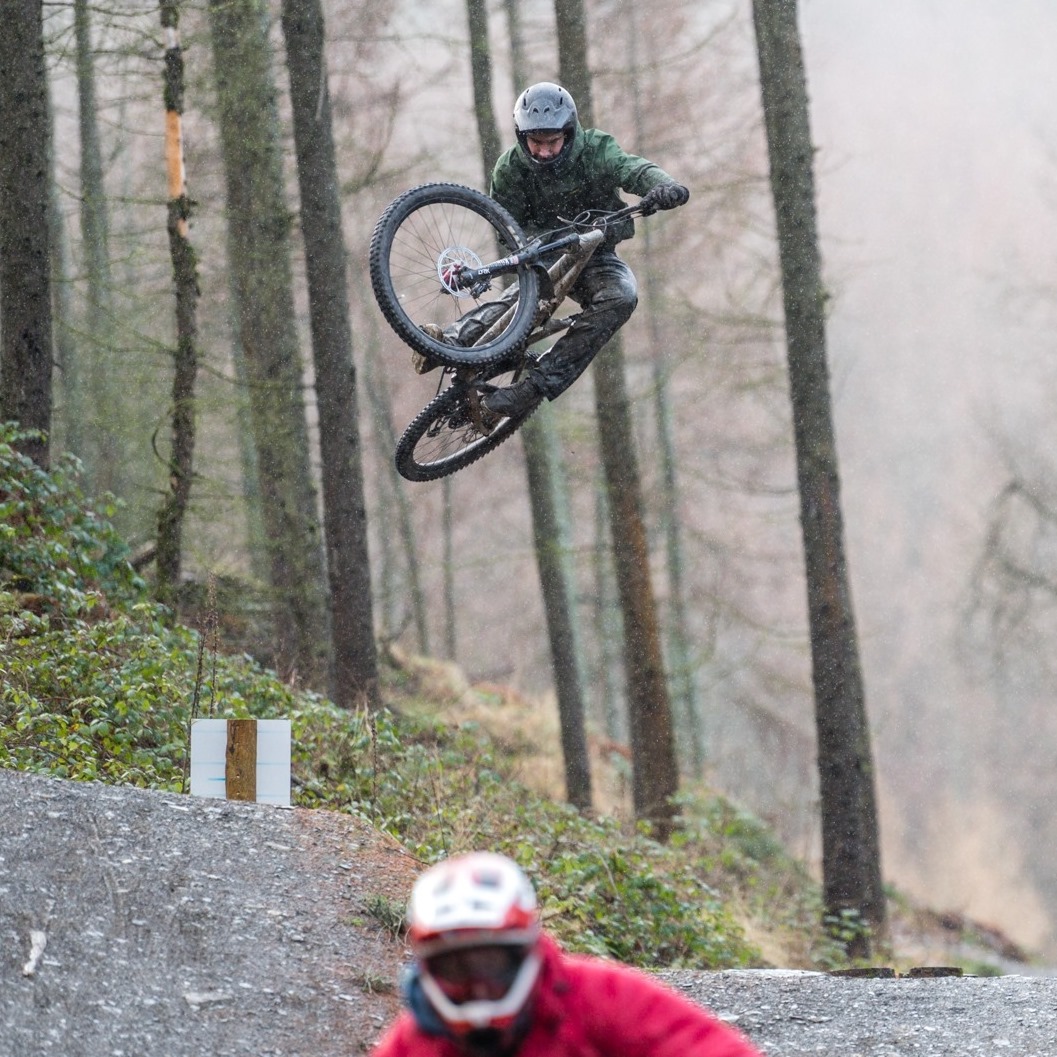What Are Plus Size Mountain Bike Tires?
/ Beginners • Tips / What Are Plus Size Mountain Bike Tires?
Intro to Plus Sized Tires
Plus size mountain bike tires have taken the MTB world by storm. If you’ve been keeping up with the mountain bike world, you’ll know what we’re talking about.
Plus-size tires are bigger and broader tires seated on regular bikes.
There are several benefits to this: improved traction, better obstacle clearance, and more confidence off-road. But as you shall see, for some people, the cons outweigh the pros.
Here’s everything you need to know about plus-size MTB tires.
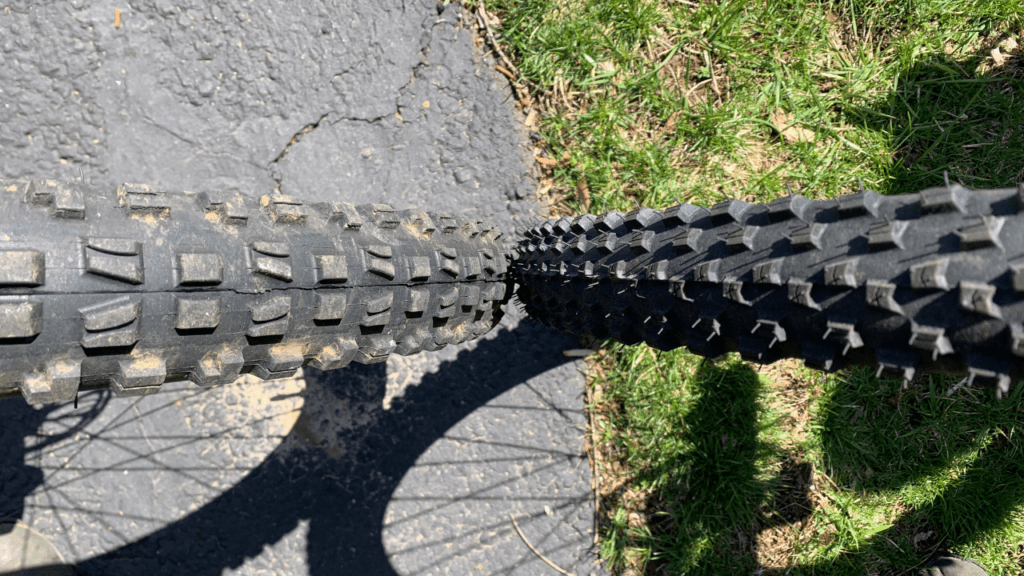
What are Plus Size Mountain Bike Tires?
So, what exactly is a plus sized bike tire? Those of us staying in touch with recent MTB trends would know. But for those who don’t, a plus-size MTB tire has a bigger diameter and thicker rim.
The exact measurements are not as rigid, but there’s a popular estimation. Any tire with a thickness of 2.6 to 3.25 inches, when seated on a 35 to 50 mm rim, is a plus-size tire. Typically, these are referred to as 27.5-inch tires instead of “regular” 29-inch tires.
Plus-sized tires on regular-sized mountain bikes became popular as a modification. But now, some companies are rolling out bikes especially meant for plus sized tires. Trek is one example, with its recent Plus line. And many other companies are following the suit, such as Maxxis Rekon + Mountain Bike Tyre.
But why would you want a bigger tire than what is recommended by the manufacturers? Well, for one thing, it aids a lot in traction. Since it’s bigger, it will cover more distance with a lower amount of power. Plus, it rolls over obstacles with ease owing to its wider surface-contact area.
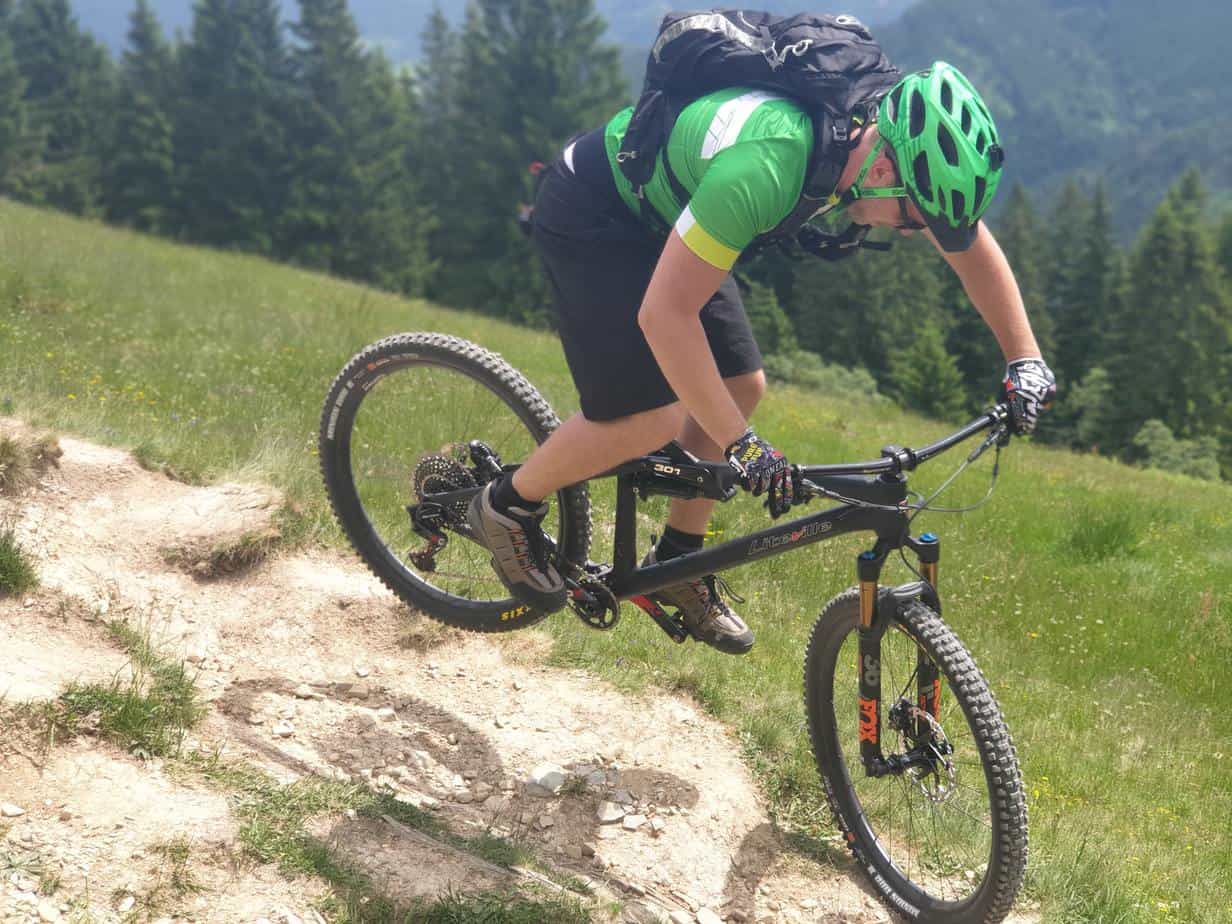
Pros and Cons of Plus-Size Mountain Bike Tires
Pros:
Better Traction:
Plus-size tires provide better traction than regular ones. Since the tire’s diameter is slightly bigger, it covers more linear space than its thinner counterparts. And as such, with each revolution, you dig into more dirt. The difference is not a lot. But when you cycle over and over again, the benefit becomes apparent.
Additionally, plus-size tires have a wider surface area. They make contact with more of the road. So, they sit flush against any small obstacles and glide over them smoothly.
Clears Obstacles Faster:
Since plus-size tires make contact with more of the trail, they can glide over small obstacles. This means you can race through slightly coarse terrain with no worry about falling or getting tripped up. It also takes a lot of work off of your suspension.
One of the most significant reasons why plus-size tires became popular was because of their obstacle-clearing abilities. With plus-size tires on a bike, it’s hard to differentiate between off-road and on-road.
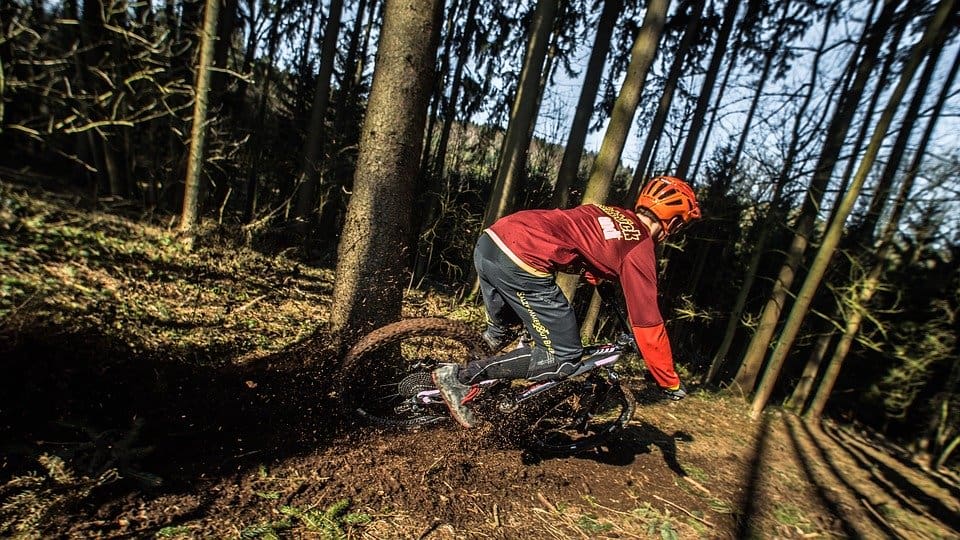
Confident Control:
With a regular tire on a mountain bike, you’re always afraid of the slightest bumps. And off-roading is more a game of avoiding obstacles than it is of just enjoying the ride.
With plus-size tires, however, you can ride more confidently. Each turn will generate more traction, giving you a better grip on the road.
And the climb? It’s as smooth as you can imagine. Plus-size tires make it easier to climb since they grab onto more of the road and travel farther than your regular tires.
Cons:
Adds More Weight:
One of the biggest cons of plus-size tires is their added weight. Plus-size tires are heavy. The Maxxis Rekon, for instance, weighs 537g . They can increase the overall weight of the bike, which may impact traction. And if you’ve packed a few extra pounds, the weight will be even more exaggerated.
This can lead to the ride feeling like it’s dragging you down. And it will undoubtedly impact the friction. More friction with the road hinders movement and wears out your tread faster, and affects the chain.
But that’s not even the worst part. Since manufacturers want to make bikes as light as possible for many reasons, they will have to take away weight from other parts. This could mean heavier tires but flimsy wheels. Or a seat that doesn’t hold up your weight. The best course of action would be to put a plus-tire on a regular bike instead of buying the store-bought ones.
Sensitive To Pressure:
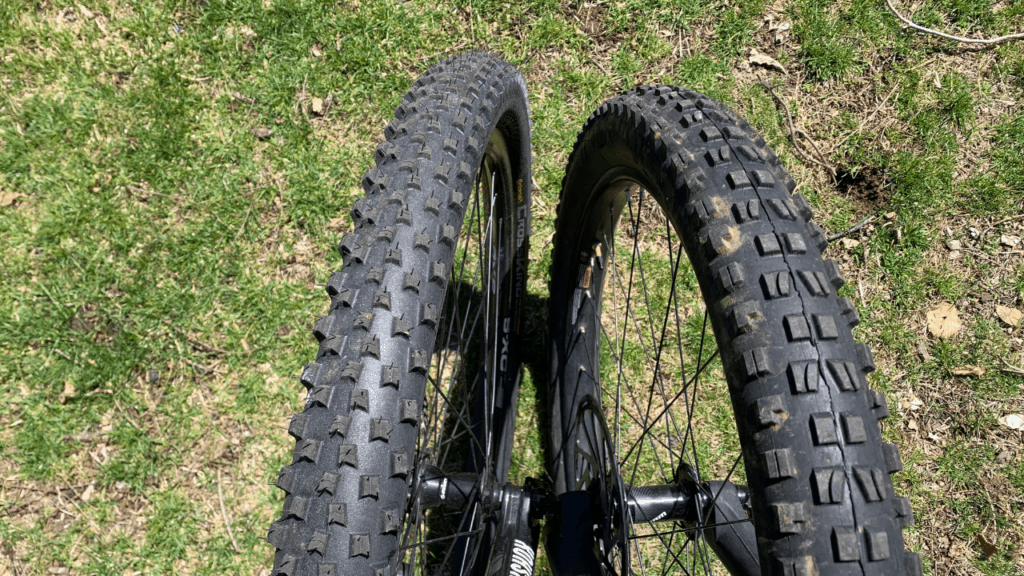
Plus-size tires are susceptible to pressure. You need to maintain a pressure of about 15 psi. Anything even a few psi’s below that will negatively impact performance.
You see, with a regular tire, pressure is not an issue. But since the plus-size tire is too big for its rim, slight pressure variations will either make it bulky or too narrow.
If the tire is too narrow, it will be hard to steer since the wheel’s rim will contact the ground. And if the tire is too bulky, it will wobble from side to side, which isn’t pleasant for obvious reasons.
Instead, you must keep the pressure at the recommended 15 psi level. This also means that you can’t experiment with pressure like with regular tires. So, no more increasing the pressure to improve the suspension.
Wider Rims Are A Must:
We already talked about how pressure can affect the tire’s performance. But the width of the rim can have the same effect.
If the rim is too narrow, the tire will bulge out more, resulting in side-to-side wobbling and instability. And if the rim is too wide, the tire will sit flatly on it, reducing your suspension.
If you want a plus-sized tire on a bike, you must have a rim that matches it. No, it shouldn’t be the same unless you’re buying a store-bought plus-tire bike. But be sure the rim is not a lot wider or narrower than the tire.
Extra Bouncy Tires:
Finally, plus-size mountain bike tires are extra bouncy. This is good news for people who are fond of extra tire pressure and love that bouncy feeling. But for most people, that extra bounciness will mess with your suspension.
And the worst part is that you can’t even dampen it. If you meddle with the pressure, your ride will only get worse. And you can’t even use slow-rebounding casings without significantly affecting your ride.
If you like a bouncy ride, then, by all means, go for it. But if not, get ready for bounces that make you feel unbalanced and unconfident. And if the road up ahead is incredibly bumpy, good luck adjusting your suspension.
Plus-Size Tires Vs. Regular Bike Tires
After all this talk of how good or bad plus-size tires are, it’s crucial to compare them to the regular ones. They’re bigger, of course. But there are some other key differences:
- Plus-size tires are heavier. They can weigh a few pounds more than regular tires, depending on the type and the tires’ internal thickness.
- Plus-size tires require wider rims. There’s usually a tolerance of a few inches, but in most cases, you’ll need to upgrade your rims too.
- Plus-size tires provide better traction. They touch more of the trail and feel more stable than the regular ones. Plus, they cover longer distances.
- Regular tires are easier to adapt to. Your bike was made for a regular tire. If you were to place a flat tire on it, it might not be possible.
- Regular tires feel better. Now, this has more to do with what you’re used to. But most people find fat tires a lot harder to switch to.
FAQ

Should You Switch To Plus-Size Tires?
So, what’s the endgame here? Are plus-size mountain bike tires good for you? They seem to improve traction and provide more stable turns. On the other, they weigh you down and reduce ride performance.
Well, the answer to that is, it depends. If you’re a beginner, plus-tires may help with turns and off-roading. After all, they do provide better traction and can cover obstacles better. But as a beginner, you should know the cons of plus-tires and upgrade to regular tires as soon as you’re done learning. And yes, don’t get too used to them.
But beginners are not the only ones who can benefit from plus-tires. More experienced riders can also exploit these tires’ traction, given that they only do so on rugged terrain. Be wary of the cons mentioned before, though, as you may have to adjust accordingly.
Otherwise, it’s not recommended. Especially for commuters and city tourers, the cons weigh out the pros.
Can I Put Bigger Tires on My Mountain Bike?
With all this crazy talk about plus-size mountain bike tires, the real question still stands: is it possible? The companies have started to roll out plus-tire bikes. But can you modify your own?
And the answer is yes! But there are a couple of things hindering your decision.
Firstly, you have to consider the wheel’s rim’s width. Wider tires will be so in both the horizontal and the vertical axis. So, a “taller” tire will be wider from the sides too. This means if the rim doesn’t sit flush against the bead, your tire will look like a “light-bulb” in its cross-section.
You don’t want that. This will cause wobbling, which will, in turn, impact your balance. Instead, you should either stick to the regular tire or upgrade only a few inches. The only way to find out the most comfortable tire width range is to test a few different widths out. Maxxis, Continental and Specialized can be a good choice when you’re looking.
Secondly, check how much clearance you have at the fork. The fork is the part of the bike where the wheels attach to the head tube. As the name suggests, this is where the two prongs for either side of the wheel separate. There’s usually a horizontal bar that keeps the two prongs connected directly above the tire.
Wider tires will require more clearance under this bar. Measure out how much support you have by either removing the tire and taking your measurements or doing so with the tire on. This is one factor that you most definitely cannot mitigate. You mustbuy a tire with a width that fits that clearance.
Conclusion
Plus-size tires are the craze nowadays. But just because everyone’s doing it doesn’t mean you should follow suit. Instead, it is crucial to assess the pros and cons of oversized tires and whom it’s recommended for.
In a nutshell, plus-size mountain bike tires are recommended for newbies who want a head start off-roading. Experts who like off-roading can also benefit from these. But be careful as they’re heavier, require a wider rim and more clearance, and are extremely sensitive to pressure.
With that being said, you’ll never like it until you try it. So, try out your first oversized tire and see if it’s your fit!
Below is a Pinterest friendly photo… so you can pin it to your Mountain Bike Board!
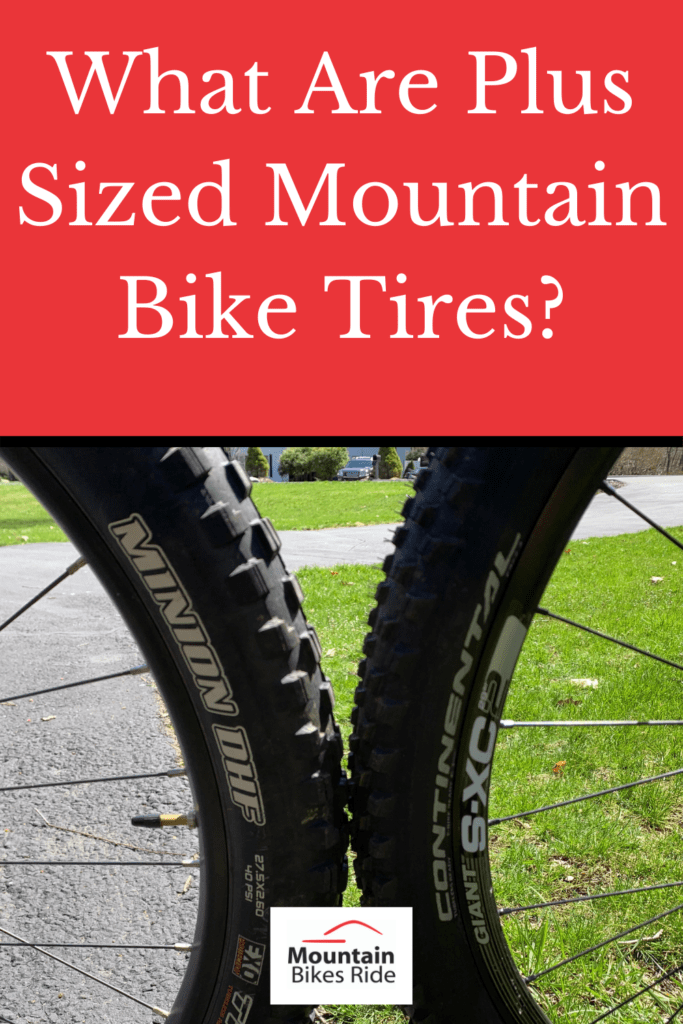
Related Articles
What Are Mountain Bike Rock Gardens?
Oli L • September 5, 2022
So you're getting into mountain biking and not sure what mountain bike rock gardens are. Riding rock gardens on a mountain bike is a skill to learn when you first start riding. You might have thought that most trails will be smooth and easy to navigate through but remember that each trail is different. Preparing for these obstacles will help you become a better mountain biker. Rock gardens can come...
The Full Suspension Vs. Hardtail Debate Continues
Oli L • August 28, 2022
The full suspension vs. hardtail debate continues as we look at the pros and cons of each type of bike. Both full suspension and hardtail mountain bikes are great options if you want to start mountain biking. But what do you really need to know about each type before buying one? Mountain biking has exploded in popularity in recent years. The sport involves riding through singletracks mostly in beautiful mother...
6 Mountain Bike Maintenance Tips For Beginners
Oli L • August 8, 2022
There are many different types of mountain bikes out there. But, they all have one thing in common – ongoing maintenance. Mountain bike maintenance can be tricky if you don’t know what you’re doing, you could end up damaging your bike or even yourself. Mountain bikes require proper maintenance to keep everything running smoothly. In this article, we'll show you what to do when things go wrong as a beginner...
8 Steps To Becoming A Better Mountain Biker
Oli L • June 13, 2022
Mountain biking is an activity that requires skill, strength, endurance, and balance. It’s also a great way to stay fit and enjoy the outdoors. But before you hit the trails, there are a few things you need to know to become a better mountain biker. The activity requires both strength and skill. It’s also a sport that has become increasingly popular in recent years. To improve your riding skills, you...
5 Mountain Bike Racing Tips for Beginners
Oli L • June 10, 2022
Mountain bikes are becoming increasingly popular in recent years. They offer an exciting way to explore the outdoors. It also offers many physical and mental health benefits on top of the friendly competition that many enjoy. We're going to go over 5 mountain bike racing tips for beginners to help you get going. MTB racing is an exciting sport that combines speed, agility, and strength in a way that few...
Latest Articles
Popular Articles
Product Of The Week
Monday 31st March
